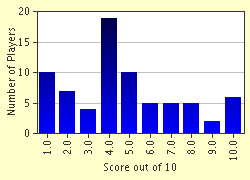Quiz Answer Key and Fun Facts
1. The first Guinea issued by Charles II (1663) had a little elephant imprinted on it. Why?
2. The first Guinea had its edges inscribed with a logo, which was said to have been taken from Cardinal Richelieu's purse clasp. Which of the following was the logo?
3. Who wrote "Representation to the Right Honorable the Lords Commissioner of His Majesty's Revenue" or just "Representation" for short? (Hint: He was the Warden of the Royal Mint at that time.)
4. Which famous economist's letters to the editor of the "Morning Chronicle" about Britain's shrinking gold reserves and depreciation of the pound in the foreign exchange markets led to the formation of the 'Bullion Committee'?
5. The 'Bullion Committee' report contained the detailed reports of many financial experts, academia. Only one name and his particulars was not mentioned. Who, according to most historians, is widely accepted, as this Mr. Incognito?
6. What is the main reason why the Californian prospectors were called the "49-ers"?
7. Gold was discovered at Sutter's Mill by James Marshall, who worked as the chief mechanic for Sutter. Sutter owned vast properties n the Sacramento Valley. He ruled over it like an emperor. What was the name he called his 'Empire'?
8. The California rush was followed by the discovery of gold in the Wellington area of Australia. Whose pioneering efforts led him to discover gold 'down under'?
9. Gold was discovered in South Africa in 1886. Who takes the credit for the initial discovery?
10. The discovery of gold in South Africa wasn't exactly a success because of the difficulty in mining. What was the name of the new process that finally helped the mining corporations in their endeavours?
Source: Author
ace_sodium
This quiz was reviewed by FunTrivia editor
bloomsby before going online.
Any errors found in FunTrivia content are routinely corrected through our feedback system.

